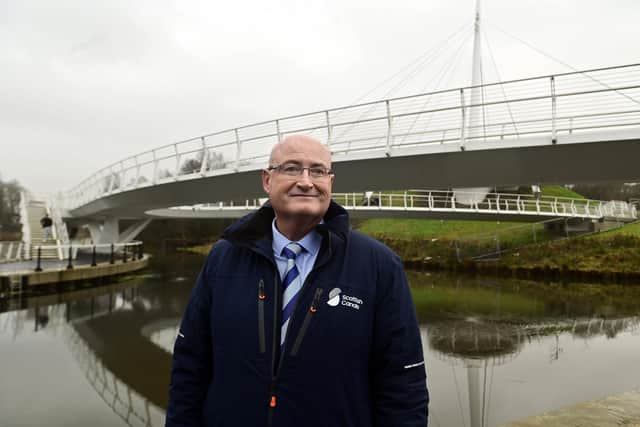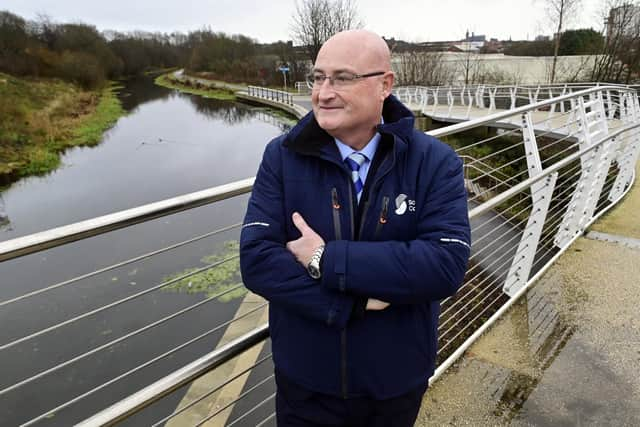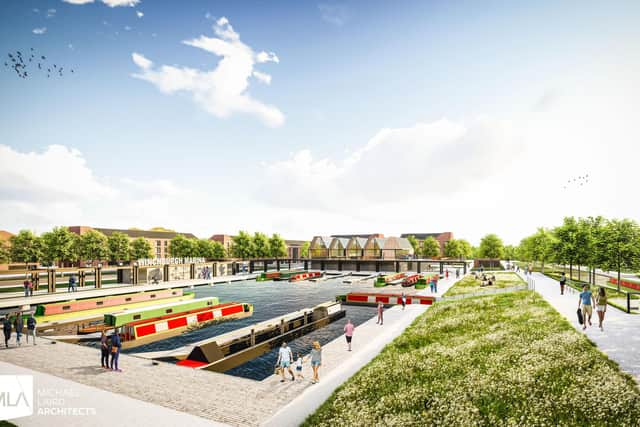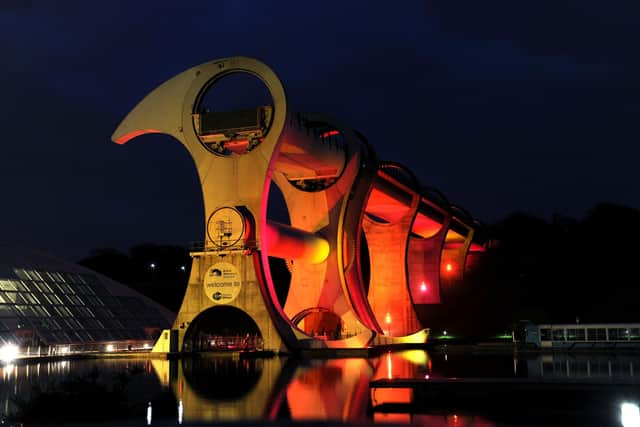‘Smart’ canals plan for Scottish Canals network to cut mounting flood risks
Devastating flooding as climate change triggers more intense downpours could be averted by more “smart” canals being created on Scotland’s inland waterways network, Scottish Canals’ new chief executive has told The Scotsman.
The world-first drainage system being pioneered in Glasgow helped areas of the city from being engulfed during Storm Babet in October by diverting the equivalent of 40 Olympic-size swimming pools of water into the Forth & Clyde Canal.
Advertisement
Hide AdAdvertisement
Hide AdIt works by the canal’s water level being lowered before heavy rainfall so it can absorb the extra run-off from across north Glasgow and transfer it to the River Kelvin, which it crosses via an aqueduct.


John Paterson, who took up his post in May, said its success had prompted plans to investigate where similar systems could be installed across Scotland’s other canals – the Union, Crinan, Caledonian and Monkland.
They could make the canals a major surface water drainage channel since they account for some 20 per cent of Scotland’s inland water, if Loch Ness – part of the Caledonian Canal – is included.
Mr Paterson said smart canals also saved energy by reducing the volume of waste water being treated, and cut the risk of sewage spills if the drainage system became overwhelmed. It also made new developments such as housing viable in areas that would otherwise require a new drainage system.
He said: "When I was at school, a flood was once in 100 years, now it’s every three years, if not more frequent, making the management of water quite tricky.


"When we activated the smart canal ahead of Storm Babet, we dropped the water level by 10cm (4in) so we could take clean surface water from the vicinity of its catchment.
“We took 100,000 cubic metres of water from around the Pinkston area [the Forth & Clyde Canal basin beside the M8, north of the city centre] that could otherwise have ended up somewhere else and flooded it.
"There is definite potential to replicate that elsewhere because we have established the principle in north Glasgow, where it works well and has unlocked a large area of land for development that otherwise would have been uneconomic.
Advertisement
Hide AdAdvertisement
Hide Ad"I would like to study the rest of Scotland to see what other parts of our network would be suitable. We think there’s a future in that – there’s got to be more of the canal network where it would work.


“It’s a potential solution to a lot of urban drainage problems which I don’t think people have woken up to yet.
"Most of the infrastructure is already there, but there’s some automated sluices and valves that would be required. They could be activated at the press of a button or the click of a mouse.
"It’s significantly more cost effective than building new sewers and drains. There would also be less pollution because rainwater gets mixed with sewage in the drainage system and can overwhelm it, causing spills.
"It is also very energy intensive to treat waste water, so there’s also a huge carbon benefit.


"It’s very simple technology. What makes it viable now is weather forecasts in Scotland are more sophisticated.”
Mr Paterson said the innovation was attracting interest from across the world. He said: “We had a visit from China last week, so we’re on the map globally for that invention.”
He said smart canals represented an “upside” to the climate change challenge, which was causing the problem of lack of water too.
Advertisement
Hide AdAdvertisement
Hide AdHe said: "Loch Ness reached its lowest level on record this summer and it didn’t rain in the Crinan Canal for nine weeks. Water levels got close to dropping to unviable levels."
The canal in Argyll, nicknamed “Scotland’s most beautiful short cut” for enabling boats to bypass the Mull of Kintyre, is popular with yachts and other transit traffic. But Mr Paterson said it was Scottish Canals’ most “most problematic” because of its complicated water management system.
He said: "Nine reservoirs up in the hills cascade like a Champagne fountain down to the canal and it’s quite challenging for staff to get the water levels correct and the canal navigable. There was a lot of skill involved this summer in managing that fountain.”
Mr Paterson also wants to build on the proven health benefits of canal-side living to give more people the opportunity to benefit.
Living within 700m of a canal reduces the incidence of stroke and cardiovascular disease by 15 per cent, according to a joint study with Glasgow Caledonian University last year.
Mr Paterson said: “That showed tangible benefits to health, especially in the more challenged communities in north Glasgow. There are a number of factors involved, but the bottom line is you have access to open, linear parkland, and that’s obviously got to be good for your health if you have it on your doorstep.
"We want more people to live by and on water.”
Plans include at a new basin on the Union Canal at Winchburgh in West Lothian, which Mr Paterson said would include a restaurant and shops. He said: “It shows canals can sustain the expansion of towns – you are effectively building a town with a park, and you have a path for walking and cycling to school, and so on.”
Other current projects include a £2.7 million overhaul of the Falkirk Wheel, which lifts boats between the Union and Forth & Clyde canals, and attracts 500,000 visitors a year.
Advertisement
Hide AdAdvertisement
Hide AdOver the winter, the electronics behind the 21-year-old wheel are being upgraded “to the equivalent of the latest iPhone technology”.
Mr Paterson said: “People will come to Falkirk for a day out and do the Falkirk Wheel and the Kelpies [giant equine sculptures], if not also stay overnight. You hear so many languages there – the international dimension is quite immense.”
Comments
Want to join the conversation? Please or to comment on this article.